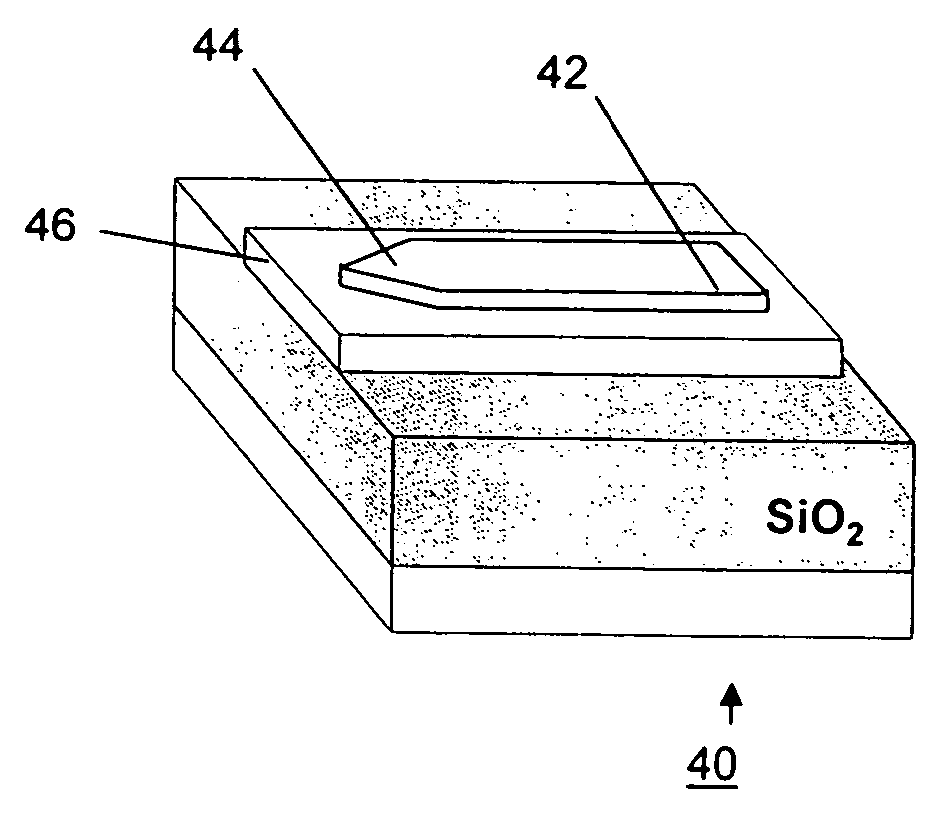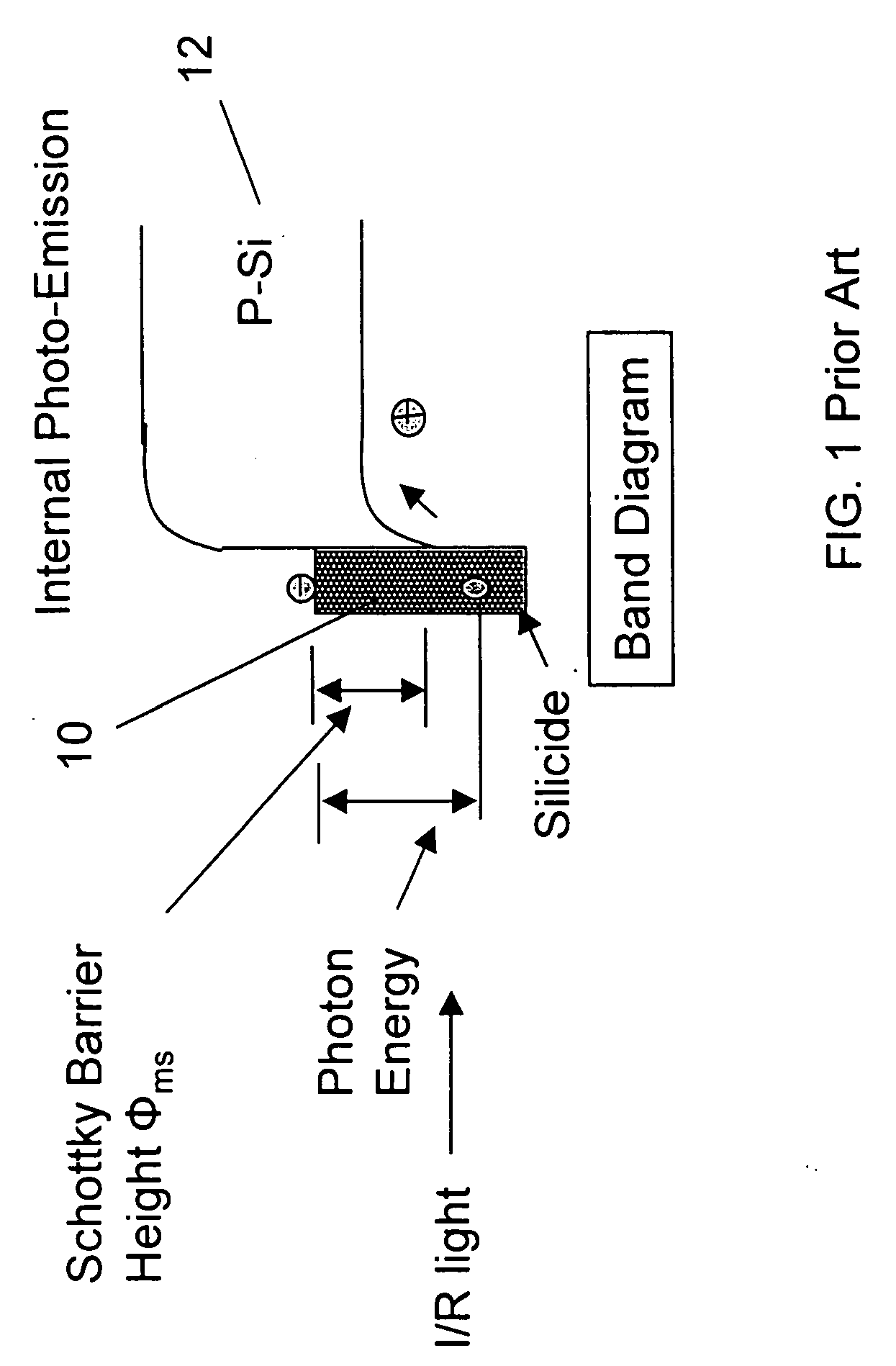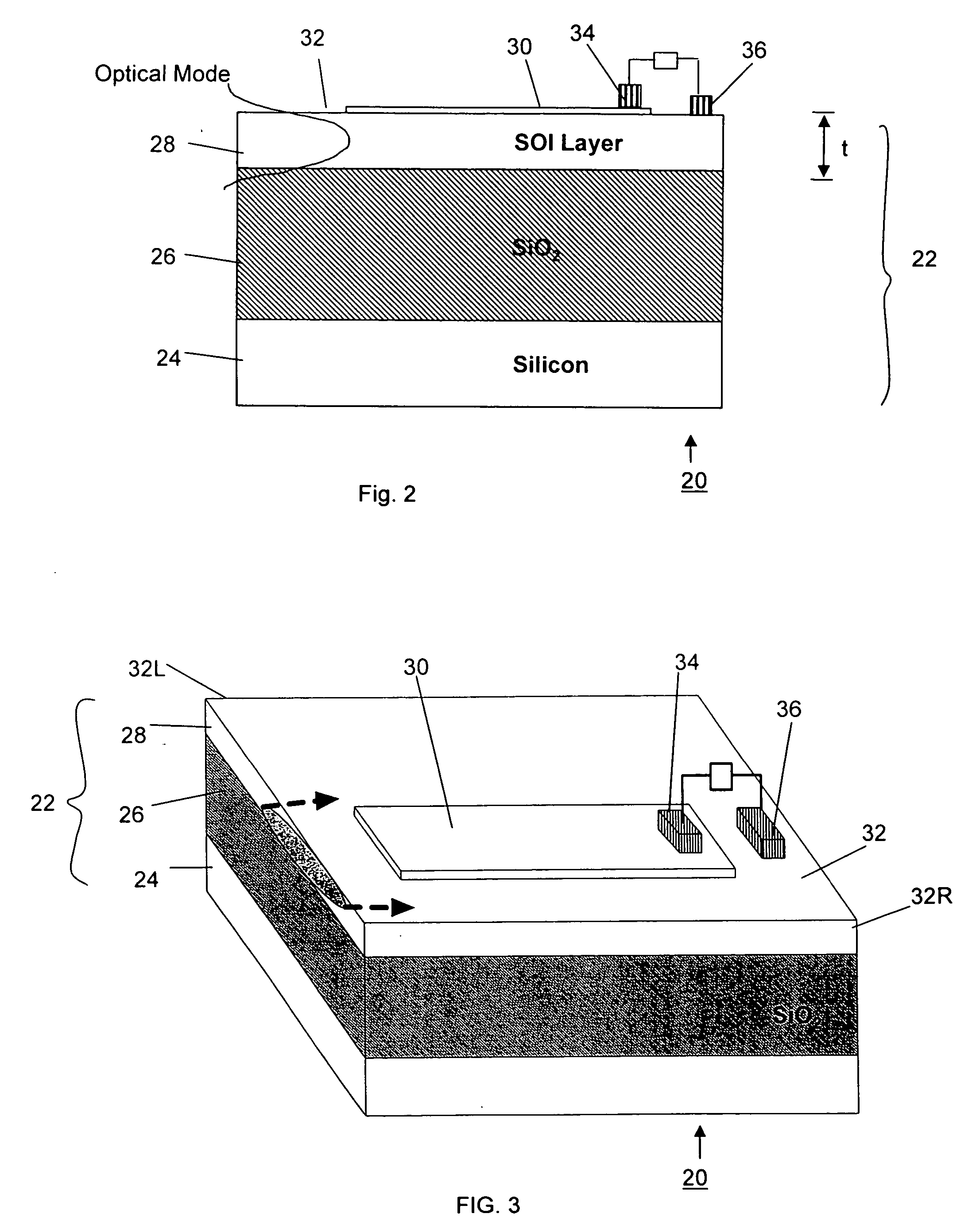Silicon-based Schottky barrier infrared optical detector
a technology of infrared optical detectors and silicon-based schottky barriers, which is applied in the direction of optical elements, optical waveguide light guides, instruments, etc., can solve the problems of large scattering loss along the sidewalls of the rib waveguide structure, low external quantum efficiency levels, and large loss of scattering loss, etc., to achieve low dark current and operate efficiently at room temperature
- Summary
- Abstract
- Description
- Claims
- Application Information
AI Technical Summary
Benefits of technology
Problems solved by technology
Method used
Image
Examples
Embodiment Construction
[0031] As described above, the present invention is directed to a monolithically integrated, planar Schottky barrier infrared waveguide detector capable of operating below, at or above room temperature. Advantageously, the fabrication process and materials of the inventive detector are compatible with conventional, planar CMOS process technology associated with the semiconductor industry.
[0032] In accordance with the present invention, a Schottky barrier junction is formed on the sub-micron thick, planar silicon waveguiding surface layer (“SOI layer”) of an SOI structure. This Schottky barrier junction is formed in such a way that the optical signal propagating laterally along a waveguide within the planar SOI layer (traveling in the direction parallel to the junction) is continuously absorbed into the overlying silicide layer as it passes thereunder. As a result of this geometry, even a relatively thin silicide layer (e.g., a few monolayers thick) will absorb a large portion of th...
PUM
 Login to View More
Login to View More Abstract
Description
Claims
Application Information
 Login to View More
Login to View More - R&D
- Intellectual Property
- Life Sciences
- Materials
- Tech Scout
- Unparalleled Data Quality
- Higher Quality Content
- 60% Fewer Hallucinations
Browse by: Latest US Patents, China's latest patents, Technical Efficacy Thesaurus, Application Domain, Technology Topic, Popular Technical Reports.
© 2025 PatSnap. All rights reserved.Legal|Privacy policy|Modern Slavery Act Transparency Statement|Sitemap|About US| Contact US: help@patsnap.com



